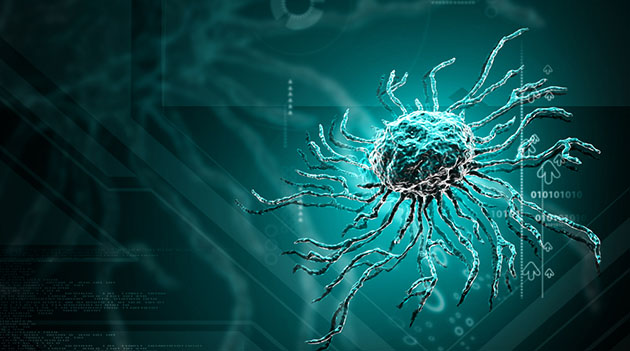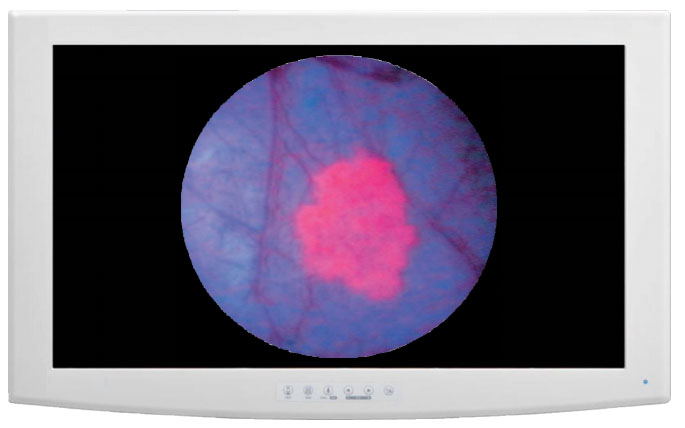The Life Sciences Report: Cynata Therapeutics Ltd. (CYP:ASX) is developing a proprietary platform for treating a wide range of diseases, including cancers. What sets your Cymerus platform technology apart in the field of regenerative medicine?
Stewart Washer: Cynata's technological breakthrough amps up our ability to manufacture mesenchymal stem cells (MSCs). MSCs are pluripotent stromal cells, the body's repair mechanism. They occur naturally in bone marrow, fat and other bodily tissues. When an injury occurs—from a cut finger to strokes and heart attacks—mesenchymal stem cells rush to the site of the injury. They release floods of growth factors and other goodies to calm down inflammation and catalyze cell repair and regrowth. These cellular superhealers are our body's first-aid kit, our first responders. But they can use some help.
"Our Cymerus technology cracks the biggest problem in stem cell medicine."
For a dozen years, MSCs have been featured in a wide range of medical trials, often demonstrating success for treating lethal diseases. Clinical trials of MSCs are showing good results for healing damage from heart disease and strokes. And MSCs are demonstrating healing properties for serious autoimmune diseases, such as Crohn's disease. The fast-acting stem cells can regulate and calm the immune system, even after it suffers damage from radiation or chemotherapy treatments.
TLSR: How are MSCs obtained for use in disease treatments?
SW: Companies like Mesoblast Ltd. (MESO:NASDAQ; MSB:ASE; MBLTY:OTCPK) extract a few MSCs from donors. They modify the cells to make a few hundred doses for use in clinical trials. There is only one approved product on the market at the moment, Mesoblast's Prochymal. That drug treats a devastating disease called graft-versus-host disease (GvHD), which arises when a leukemia patient's immune system rejects transplanted bone marrow, and it ends in a horrible death. Mesenchymal stem cells stop the immunity-based rejection, preventing death.
The problem with available MSC treatments is that the technology can only make a few hundred doses at once. State-of-the-art techniques cannot make multiple doses from a single donor, because donor-dependent stem cells quickly lose potency. That forces MSC firms to look for new donors and start up the manufacturing process over and over again.
Our Cymerus technology cracks the biggest problem in stem cell medicine, which is how to make unlimited amounts of mesenchymal stem cells from a single donor.
TLSR: What is the shelf life of the original stem cells harvested from a donor?
SW: Frozen stem cells can last for years. But once thawed out, they lose power. The Cymerus technology gets around the loss of potency with the unlimited iPS cell—or induced pluripotent stem cell—which is basically immortal. The iPS cell resembles the immortal embryonic stem cell, from which a whole body is grown from one cell. Like embryonic stem cells, our iPS cell line never changes, never ages, never loses its potency. We can manufacture unlimited numbers of mesenchymal stem cells from a single donor. Nobody else is doing that.
TLSR: Is that a complex manufacturing process?
SW: Making MSCs is low tech, requiring only basic cell-culturing techniques. We can grow them in flasks, or even bags. The high-tech angle is the patented cell culture technique to turn the unlimited iPS cells into usable MSCs.
TLSR: Do you have patents in the United States?
SW: The University of Wisconsin owns the technology, and we have the exclusive license to manufacture the patented MSCs. Key patents were granted in the United States, Japan and other major jurisdictions, including our home market in Australia.
TLSR: What is your relationship with the scientists at the University of Wisconsin that invented the Cymerus technique?
SW: We work very closely with Igor Slukvin, who is one of the key inventors. He has published more than 70 papers about stem cells. The patented formula for the Cymerus technique was originally published in Cell, which is the equivalent of Nature in the stem cell world. Igor works in a hands-on way with Cynata and our partners. His co-inventor is James Thomson, who first isolated an embryonic stem cell. James was also one of the first researchers to isolate a human induced pluripotent stem cell. He is stem cell royalty.
TLSR: What will a successful launch of Cymerus mean to clinical practices?
SW: The advent of Cymerus will transform medical practice. Right now, MSC-based treatments are boutique—very expensive because of the need to continually locate streams of new donors. Our non-donor-dependent method will transform stem cell medicine into an affordable and potent off-the-shelf product. It will not be sold over the counter, but it will be available at the right price as prescribed by a doctor. Our major breakthrough is being able to create uniform batches of MSCs at a reasonable price.
TLSR: Affordable to millions of patients?
SW: Hundreds of millions of people are affected by strokes, heart disease, and Crohn's disease. They will demand this medicine, and we can provide it at good value.
TLSR: Do the batches of Cymerus MSCs have to be designed to target a particular disease, or is it one size fits all?
SW: That is the beauty of Cymerus. All treatments use the same cell structure. MSCs are MSCs: They go after all the diseases they can affect. Only the dosage regime changes for treating different diseases.
TLSR: Cynata Therapeutics recently announced several milestones in the development of commercially manufactured stem cells. What is the story?
SW: We have a nice deal coming up with a private firm called apceth, a little-known German company. Apceth is extremely well funded. It is already treating cancer and other diseases using mesenchymal stem cells. These are the ultimate delivery mechanisms for transmitting anticancer drugs to a cancer site. It is like smuggling an AK-47 inside a cancer cell and taking it out with a single shot.
"Cynata's iPS cell line never changes, never ages, never loses its potency."
Apceth has a successful trial underway using modified mesenchymal stem cells to treat gastrointestinal cancer. Apceth's biggest problem is keeping costs down, and that is where Cynata comes in. We will announce the terms of our partnership soon. The short story is that apceth will deploy our technology with its anticancer drugs.
TLSR: Who is backing apceth?
SW: Apceth is backed by Andreas and Thomas Strüngmann. The Strüngmann brothers are famous in Germany for selling a small generic drug manufacturing company called Hexal AG to Novartis for $7.5 billion ten years ago.
TLSR: What is your capital strategy looking forward?
SW: We have $8 million ($8M) in the bank, and our burn rate is low. We have enough cash for the next two years. The partnership deals bring upfront and early milestone payments that will generate more cash.
We are gradually increasing our exposure to capital markets in the United States. We recently did a $5M placement into U.S. institutions. We are considering launching a NASDAQ-listed ADR. We have an ~AU$25M market cap. By comparison, Mesoblast has an ~AU$542M market cap. There is a ton of upside for investors.
TLSR: How do you plan crack the U.S. capital market?
SW: With a lot of shoe leather. My years of experience in biotech and healthcare companies have taught me to knock on doors, talk to investors, make strong pitches and feed the news flow. A NASDAQ listing is an easy entry point, but there is no substitute for telling the story and signing good, quality deals. Investors especially like to see third-party validation. Along those lines, we inked a deal with Harvard University's medical school in October 2015.
TLSR: Are you carrying any debt?
SW: No debt at all. I have done debt financing with other companies, but it is a much sounder strategy to raise enough cash and spend it wisely.
TLSR: Cynata has engaged the Clinical Trial Company as the contract research organization for a Phase 1 study of the Cymerus technology. What is the design and time frame for that study?
SW: The Cymerus trial should prove that our manufactured mesenchymal stem cells are as good, or better, than any other brand. The trial is to treat GvHD with our patented MSCs. We are taking 16 patients into a Phase 1/2 study. We will dose them with our mesenchymal stem cells at a rate of 1 to 2 million cells per kilogram, or a few hundred million cells for each individual. We are looking at safety issues, but MSCs are already proven to be safe. At 28 days post-injection, if the patients are sitting up in bed or walking around, the product will have worked. I say that because death is the only alternative. It is a pretty dramatic trial design. The study will start during first half of 2016. We will have a readout quickly because the time frame for patients with immune rejection disease is short.
TLSR: The study's patients are in the terminal phase of the disease?
SW: The standard of care for treating GvHD is administering steroids. If the steroids do not work, the patient dies. We can save them at the brink of death. Recruitment is not a problem, and the regulators are keen on the study.
TLSR: Are there any anticipated side effects?
SW: There are no reported side effects with mesenchymal stem cells, which is amazing for a new treatment class.
TLSR: What sets Cynata apart in the competitive landscape?
SW: There are lots of companies making mesenchymal stem cells from bone marrow, placenta, fat and different tissues. They all claim that their mesenchymal stem cells are the best, but they all suffer from not being able to make enough doses to treat a big disease. The managers wear themselves out constantly looking for new donors to replenish supply. They have to continually restart the donation-to-manufacturing process.
"Our non-donor-dependent method will transform stem cell medicine into an affordable and potent off-the-shelf product."
That is the competitive landscape we are leaving in the dust. No one has cracked the unlimited expansion of MSCs other than us. We own the space at the moment, alongside the University of Wisconsin. Someone will eventually compete with us, but we are many years ahead of the pack.
Realistically, the competitive landscape is good for us. Inventive companies are constantly finding new uses for mesenchymal stem cells, and we control the most revolutionary manufacturing technology for the foreseeable future. The endgame is to get that technology into the hands of big pharma and big biotech. When Johnson & Johnson moves into stem cells, its executives do not want to see a line of bone marrow donors cued outside the MSC factory. They want the technology encased inside stainless steel tanks: Turn the handle and get another batch of MSC doses ready to use. That is exactly what we can give deliver.
TLSR: Is Cynata looking to be acquired?
SW: We do not expect to be acquired before we grow our share price on the back of some initial partnering deals, but there will be a premium attached when we are bought out.
TLSR: Do you have any other products?
SW: We are using the patented technology to expand our product pipeline, as well as the pipelines of our partners. We are developing a lung fibrosis product with Dr. Geoff Laurent out of the University of Western Australia. A world leader in lung fibrosis research, Dr. Laurent is conducting preclinical studies using our cells. We partnered with the University of Sydney, whose Dr. James Chong is a leading heart surgeon and researcher. Our partner at Harvard University is Dr. Khalid Shah, a leading researcher in brain tumors. Dr. Shah is using mesenchymal stem cells to treat glioblastoma. We will launch a new pipeline after positive results of the GvHD trial emerge.
TLSR: What are Cynata's key performance indicators for the next couple of years?
SW: The biggest thing affecting our future is third-party validation. A successful trial, and investor follow-through after seeing the apceth deal and our academic research partnerships, will prove our technology is a profit-driver.
TLSR: What are the advantages for retail investors to invest in Cynata?
SW: There is a strange lull in the stem cell world at the moment. As with any new field, there is a lot of hype at the start. Christopher Reeve was going to walk again due to injections of stem cells; he did not walk. The market is a bit fatigued because the research is taking a long time.
"We are a bargain stock for stem cell investors."
Nonetheless, the smart investors are getting into quality tech companies that are undervalued. This year should see several big-ticket acquisitions as pharma moves back into the junior field. As these deals fire up, we will see a dramatic jump in the valuation of Cynata. Right now, we are a bargain stock for stem cell investors. We have plenty of cash, though, so we are not likely to issue more shares.
TLSR: As the executive chairman of Cynata, what are your responsibilities?
SW: My job is to guide the strategic thinking of the board of directors. What license should we go after? What partnership deals should we take on, and in what order? If I do my job well, we will end with a NASDAQ listing or being acquired for hundreds of millions with many wealthy shareholders.
Our CEO, Ross Macdonald, focuses on completing the deals, speaking at conferences, getting the message out. Ross has more than 20 years of experience. He was the vice president of Stiefel, a topical dermatology company that sold to GlaxoSmithKline (GSK:NYSE) for over £2B. Working next to Ross is vice president of product development, Kilian Kelly, who joined us after a stint at Mesoblast.
Dr. John Chiplin is a leading board member. He is based in La Jolla and very well connected in the tech space. John had good wind in a company called Arana, which sold to Glaxo for a big exit. He is a great strategist and helps us broadcast the good news about Cynata Therapeutics.
TLSR: Is there anything that could hold Cynata back?
SW: There is always risk in a new technology. But in the case of MSCs, people have already stepped on the land mines. Mesenchymal stem cells are not the cure for everything, but we are going after the diseases we know they can cure. We are partnered with people who understand the risks and benefits of MSCs and have chosen to put their money behind the Cymerus technology. We are not capital constrained at the moment. And we have the inside track with the MSC licenses and our manufacturing process.
TLSR: A pleasure talking to you, Stewart.
Stewart Washer has 25 years of CEO and board experience in medical technology, biotech and agrifood companies. He is currently the chairman of Orthocell Ltd., which cultures tendon cells to repair damaged tendons, executive chairman of Cynata Therapeutics Ltd, which is developing stem cell therapies, and chairman of Minomic International Ltd, which has an accurate, noninvasive test for prostate cancer. He was also a founder of a NZ$120M, New Zealand-based life science fund, and venture partner with the Swiss-based Inventages Nestlé Fund. He is currently investment director with Bioscience Managers.
Read what other experts are saying about:
Want to read more Life Sciences Report interviews like this? Sign up for our free e-newsletter, and you'll learn when new articles have been published. To see recent interviews with industry analysts and commentators, visit our Streetwise Interviews page.
DISCLOSURE:
1) Peter Byrne conducted this interview for Streetwise Reports LLC, publisher of The Gold Report, The Energy Report and The Life Sciences Report, and provides services to Streetwise Reports as an independent contractor. He owns, or his family owns, shares of the company mentioned in this interview: None.
2) Cynata Therapeutics Ltd is a sponsor of Streetwise Reports.
3) Stewart Washer had final approval of the content and is wholly responsible for the validity of the statements. Opinions expressed are the opinions of Stewart Washer and not of Streetwise Reports or its officers.
4) The interview does not constitute investment advice. Each reader is encouraged to consult with his or her individual financial professional and any action a reader takes as a result of information presented here is his or her own responsibility. By opening this page, each reader accepts and agrees to Streetwise Reports' terms of use and full legal disclaimer.
5) From time to time, Streetwise Reports LLC and its directors, officers, employees or members of their families, as well as persons interviewed for articles and interviews on the site, may have a long or short position in securities mentioned. Directors, officers, employees or members of their families are prohibited from making purchases and/or sales of those securities in the open market or otherwise during the up-to-four-week interval from the time of the interview until after it publishes.





























































